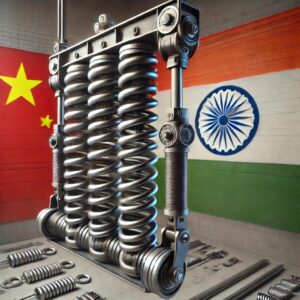Changing Your China Company’s Legal Representative
Is your company planning to change its legal representative in China? Whether you’re undergoing a corporate restructuring, preparing for a WFOE shutdown, or simply managing a leadership transition, changing a legal representative in a Chinese company is a significant and often complex decision. It requires careful planning and attention to procedural details to ensure compliance with Chinese regulations.
In many cases, companies face unexpected challenges with this process. For example, many foreign businesses looking to close down their Chinese entities find themselves scrambling to appoint a new legal representative when their designated representative actually left the company months or even years ago. Navigating these last-minute changes under time pressure can be daunting without a clear understanding of the requirements.
This post is intended to provide a step-by-step overview of the process, the documentation you’ll need, and tips to avoid common pitfalls. With the right preparation, you can manage this transition smoothly, even in challenging situations.
How Does the Change of a Legal Representative Take Effect?
The change of a legal representative takes effect once a valid resolution is adopted by the company’s competent authority, such as shareholders or the board of directors. This internal resolution legally empowers the new representative to assume their role immediately. However, while it becomes effective within the company right away, it is essential to register this change with government authorities for formal recognition and legal certainty.
Consulting with legal professionals to ensure the resolution meets all legal standards is essential. The validity of the change hinges on the legality of the decision-making process, so a misstep here can lead to significant delays.
The Importance of Registering the Legal Representative Change
Even though your Chinese company’s new legal representative assumes their role after the resolution, registering this change with relevant Chinese government authorities is crucial for several reasons, including the followin:
- Official Recognition: Filing with the Chinese government creates official documentation, formally establishing the new legal representative’s authority.
- Public Notice: Registration informs stakeholders, partners, and the public of the change.
- Legal Certainty: It creates a public record that is essential for any future legal references, helping the company avoid potential disputes or confusion about representation.
The Realities of Changing a Legal Representative in China
While changing a legal representative might sound straightforward, the process in China is often complex and document-intensive. This is especially true for Wholly Foreign-Owned Enterprises (WFOEs), where the legal representative holds significant authority and responsibility over corporate decisions. Changing a WFOE’s legal representative can be an extensive process, requiring a long list of documents and official steps.
For instance, the last time our law firm executed a change of legal representative for a WFOE in Beijing, we had to gather and/or draft the following documents:
- Company Documents:
- Amendment of the Articles of Association in Chinese (four originals)
- Amendment of the Articles of Association in English (reference only)
- Application letters for commercial bureaus, SAFE, and other authorities in Chinese (multiple originals)
- Appointment and removal letters in Chinese (four originals) and English (for reference)
- Resolutions of the investor/WFOE owner in both languages
- Powers of attorney for seal records in Chinese (two originals)
- Client-Provided Documents:
- Business license (original and two copies with company chop)
- Approval certificate (original and two copies with company chop)
- Most recent audit and capital verification reports (two copies each with company chop)
- Foreign exchange IC card, tax certificate, and customs registration certificate (originals and copies as required)
- Financial certificate, registry book for foreign-invested enterprises, and annual inspection certificates
Each document often requires multiple originals, company chops, and translations into both Chinese and English. And while this list reflects requirements in Beijing, it’s important to note that the exact requirements can vary significantly by city, district, and even individual examiner.
Key Considerations for a Smooth Transition of Legal Representatives
To navigate the document-intensive process of changing your company’s legal represenative, I urge you do the following:
- Adhere to Legal Procedures: Make sure your transition resolution complies with the company’s bylaws and Chinese regulations. An oversight here could void the entire change, so take special care with legal details.
- Select a Qualified Representative: Your new representative should meet all qualifications and be legally authorized to act on the company’s behalf according to Chinese law.
- Update Your Company Records: Reflect the new representative in your company documents, such as bank accounts, contracts, and company seal. These updates are crucial to avoid issues with transactions and regulatory checks.
- Notify the Relevant Authorities: It’s essential to inform authorities like the tax bureau, SAFE (State Administration of Foreign Exchange), and the market regulatory administration to ensure full compliance.
- Prepare for the Documentation Requirements: As illustrated above, the volume of paperwork required for changing a legal representative in China can be overwhelming. Preparing these documents, gathering necessary approvals, and ensuring they meet local standards takes time and attention.
- Consult Legal Advisors Early: A qualified legal professional can help you navigate the process efficiently and anticipate any potential issues. Seeking guidance early reduces the risk of delays, especially if you need to expedite the process for a WFOE closure or another time-sensitive situation.
The Variability of Changing a Legal Representative in China
The process of changing your Chinese company’s legal representative can be unpredictable. Requirements differ by city, district, and individual examiner, and they may (and do) change without warning. For instance, while Beijing requires a specific set of documents, another city may impose entirely different requirements. It’s crucial not to rely solely on general guidelines—always verify the current requirements with the relevant local authorities and your legal advisors.
If your company plans to exit China in the coming months, start the process now to ensure all requirements are met in time. Waiting until the last minute can lead to extended delays, especially if your currently listed legal representative is no longer with your company and unable to facilitate the transition.
Conclusion
Changing a legal representative in China, especially for a WFOE, is often more complex than expected. The process requires not only internal resolutions and government filings but also extensive documentation tailored to specific local standards. Without preparation, companies can easily face delays, particularly when time-sensitive tasks like a WFOE closure are involved.
With careful planning, adherence to legal procedures, and proactive engagement with legal professionals, your company can successfully navigate a legal representative transition.

























